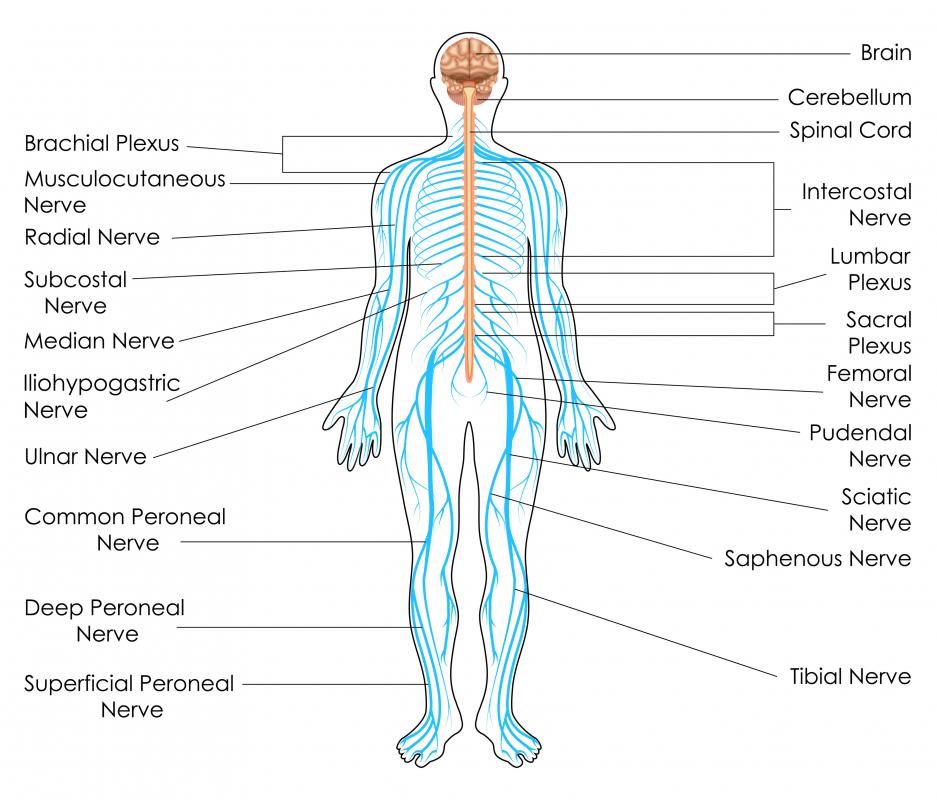At WiseGEEK, we're committed to delivering accurate, trustworthy information. Our expert-authored content is rigorously fact-checked and sourced from credible authorities. Discover how we uphold the highest standards in providing you with reliable knowledge.
What is Erb's Palsy?
Erb’s palsy is a condition that most often occurs in newborns as a result of injury during birth. The British doctor William Smellie first noted the condition in 1768, although it derives its name from the writings of Wilhelm Heinrich Erb, a 19th and early 20th century neurologist.
You may also hear Erb’s palsy described as brachial plexus paralysis, and though it is most common in newborns, it can occur in adults. Paralysis or limited movement occurs throughout either of the arms as a result of injuries to one or more of the nerves that give us feeling and range of motion in our arms. There are five nerves which can be affected, resulting in minor to major reduction in sensation or movement of an arm. All five nerves that can be damaged and create the condition are part of the brachial plexus, a network of nerves that are attached to the spine from the neck to the middle part of the upper spine. If these nerves are injured in adults, the same symptoms can emerge.

Usually Erb’s palsy will result in infants because of dystocia, difficult presentation and childbirth. A child who is stuck in the head first position (vertex), may have nerves damaged due to pulling on the shoulders. Breech birth can cause the condition too, if the arms are raised above the head and stretched. A few cases occur if the collarbone of the newborn is broken.

Though some infants may recovery from Erb’s palsy, others may have lifelong effects from it if it is not treated during the first year of life. Treatment may include taking nerves from the opposite leg and grafting them to the affected nerves in the arm to help improve range of motion and sensation. Other surgeries may be chosen instead, depending upon the degree of damage and the nerves affected.

When not treated, Erb’s palsy can cause stunting of growth to the arm, limited range of motion, or complete inability to move the arm. Some people also develop arthritis early in the affected arm and shoulder, and even those who have undergone treatment are more likely to develop arthritis. When surgery is even partly successful, patients usually need physical therapy to help recover range of motion.

Very mild cases of Erb’s palsy, where a nerve has been minimally stretched during birth, may be recovered from completely without intervention. However, the key to restoring full function to the arm is early intervention. If you note that an infant’s arm seldom, if ever, moves, or seems weak in comparison to the other arm, you should speak to your child’s physician and get a referral to a specialist who is experienced with treating children with this condition.

In very rare cases, avulsion occurs, when the nerve is not just stretched or damaged, but has been completely ripped from the spinal cord. Ideally this should receive treatment as early as possible, though treatment may not be able to totally restore function. It can however, give a better chance for children to regain some function of the affected arm.
AS FEATURED ON:
AS FEATURED ON:















Discuss this Article
Post your comments